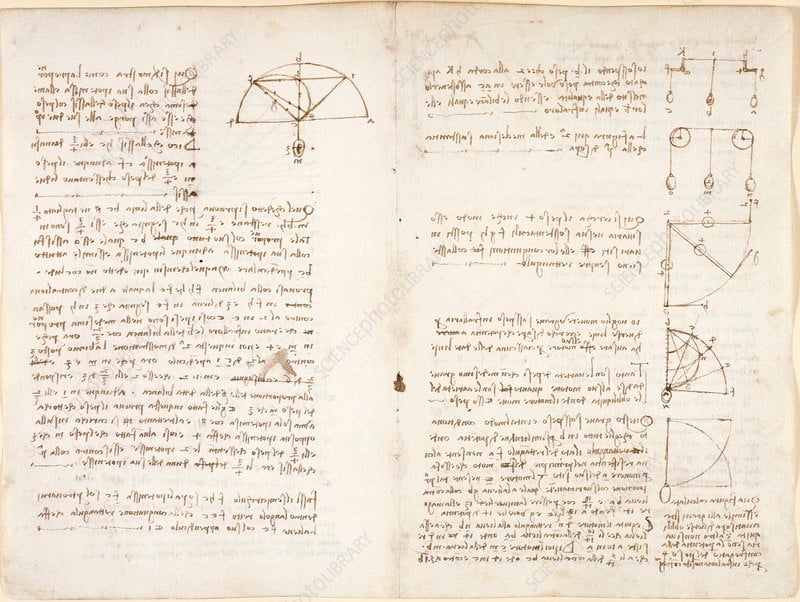One of the most innovative minds of all time, Leonardo Da Vinci paved the way to many fields of interest. Despite living in the 15th century, many of his works have been studied in detail. But do you know how this became possible?
Leonardo Da Vinci kept thousands of pages of his notes on fields of study that caught his attention. He kept his notes using mirrored shorthand writing, a technique he developed himself.
Leonardo Da Vinci’s Notes
Leonardo Da Vinci was popular for various artistic masterpieces like the Mona Lisa, the Last Supper, and his sketch of the Vitruvian Man. The Renaissance Man was also interested in many arts and sciences fields during his time. He explored anatomy, physiology, and engineering parallel to his love for the arts. (Source: My Modern Met)
Da Vinci was also known to keep records of his thoughts and ideas in notebooks. It was reported that he had accumulated more than 13,000 pages of notes and drawings during his lifetime. His notebooks span from the 1480s up until he died in 1519. Da Vinci also wrote his notes with his iconic mirror handwriting, written from right to left in special shorthand.
He also created his version of the alphabet as he didn’t wish for others to understand his writings in one glance. It was also thought that he wanted to disguise his notes as he felt that his thoughts might be considered heretical and could get him in trouble. (Source: Discovering Da Vinci)
Historians have been studying his work for decades. Some of his books have been transcribed and published online for everyone to read for free.
Codex Arundel
The Codex Arundel is a 283-page manuscript that contains various subjects that interested the talented artist, including mechanics and geometry. The physical copy is in the British Library, but they also publish it online.
Codex Atlanticus
This is the largest single collection of drawings and writings of Da Vinci. It features 1,119 pages that discuss weaponry, musical instruments, mathematics, botany, and more. Its physical copy is in the Biblioteca Ambrosiana in Milan, Italy. The Visual Agency publishes its translated digitized version.
Codex Trivulzianus
This codex is a short book of only 55 pages where Da Vinci copied lists of words from lexical and grammatical sources. The physical copy is stored in the Sforza Castle in Milan, Italy, and its online version is published by the Archivo Storico Civico e Biblioteca Trivulziana.
Codex Forster
The Codex Forster is composed of five-pocket notebooks bound into three volumes. This codex discusses Da Vinci’s understanding of geometry, hydraulic engineering, theory of propositions, topology, among many other things. The physical copy is located at the Victoria and Albert Museum in London, England. The museum also created an online publication.
Codex on the Flight of Birds
Perhaps one of the more popular manuscripts of Da Vinci, this codex shows illustrations and descriptions of his study of flight patterns of birds and several inventions of flying machines. The physical copy is located in the Royal Library in Turin, Italy. The Smithsonian National Air and Space Museum published it online.
(Source: My Modern Met)
Which is the Most Expensive Book of All Time?
While ordinary people can read copies of Da Vinci’s notes online, there is one person who could not resist having an original Da Vinci Codex as part of his book collection. In 1994, Bill Gates, founder of Microsoft, purchased the Codex Leicester in an auction.
Though not known to spend extravagantly on material things, the billionaire couldn’t resist having one of Da Vinci’s books. It was reported that he paid $30.8 million for the 72-page codex that contained sketches and ideas on astronomy, mechanics, botany, mathematics, and architecture. (Source: CNBC)
